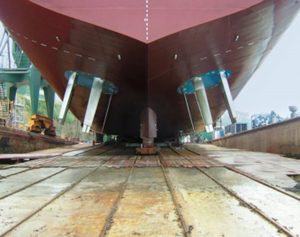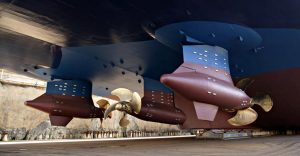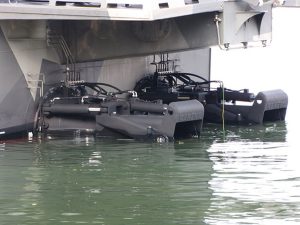Factors affecting the acceleration / deceleration of a vessel
Before discussing methods of stopping a vessel, we should look at the factors that affect the acceleration and deceleration of a vessel . They are the following:
- Inertia. Here we are talking about the amount of energy required to move an object (ship) from a state of rest and the time it takes for the object to return to a state of rest. A heavier ship (one having more mass) is much slower to gain and lose speed than a smaller vessel with comparable engine power. It requires more energy to move a large mass and when a desired speed or velocity is reached it takes longer to rid itself of that energy if it wishes to stop.
- Shape of hull. It is obvious that where we have two hulls with a similar displacement, the more streamlined hull will accelerate more rapidly and will carry its way further than one of fuller form.
- Power of propulsion machinery. There are different types of propulsion machinery. There are medium to high speed diesels working through a gear box. If such a vessel wishes to go astern, it can do so fairly rapidly since the engine is not stopped and the change in direction of rotation is achieved through gearing. A low speed marine diesel on the other hand is fixed permanently to the propeller shaft and in order to go astern, the engine must first be stopped and then restarted with the engine and crankshaft rotating in the opposite direction. Steam turbines have fixed rotation and in order to go astern a second reversing turbine needs to be used. Electric motors again, are very versatile. In order to reverse a direct current electric motor all that is needed is to reverse the polarity of the electricity supply.
- Design of propellers. Propeller design also varies quite considerably. There are fixed pitch propellers, variable pitch propellers, rotatable propeller pods, Voith Schneider propellers and water jet systems. Each one has its own characteristics, strengths and weaknesses. For example a large propeller with a fixed coarse pitch will provide a given shaft horse power very rapidly. They will also provide considerable drag when slowed or stopped and therefore improve the rate of deceleration. When such a propeller is reversed, the effect of going astern is immediately felt. In the case of a variable pitch propeller, the direction of thrust can be reversed without changing the direction of rotation of the propeller shaft. A Voith Schneider system works on a similar principle to that of a helicopter and can change the direction of thrust by merely manipulating the blades of its propulsion system. Rotatable propeller pods can change the direction of thrust by rotating the pods. Water jet systems change their direction of thrust by the use of adjustable thrust nozzles.

Fixed pitch propellers.

Variable pitch propellers.

Voith-Schneider propellers.

Rotatable propeller pods.

Water jet propulsion (nozzles).
- State of the ship’s bottom. All ships will build up marine growth below the waterline over a period of time. This increases friction between the vessel and the water and produces drag when the vessel is accelerating or decelerating. A foul bottom will also affect the vessel’s cruising speed and fuel consumption.

